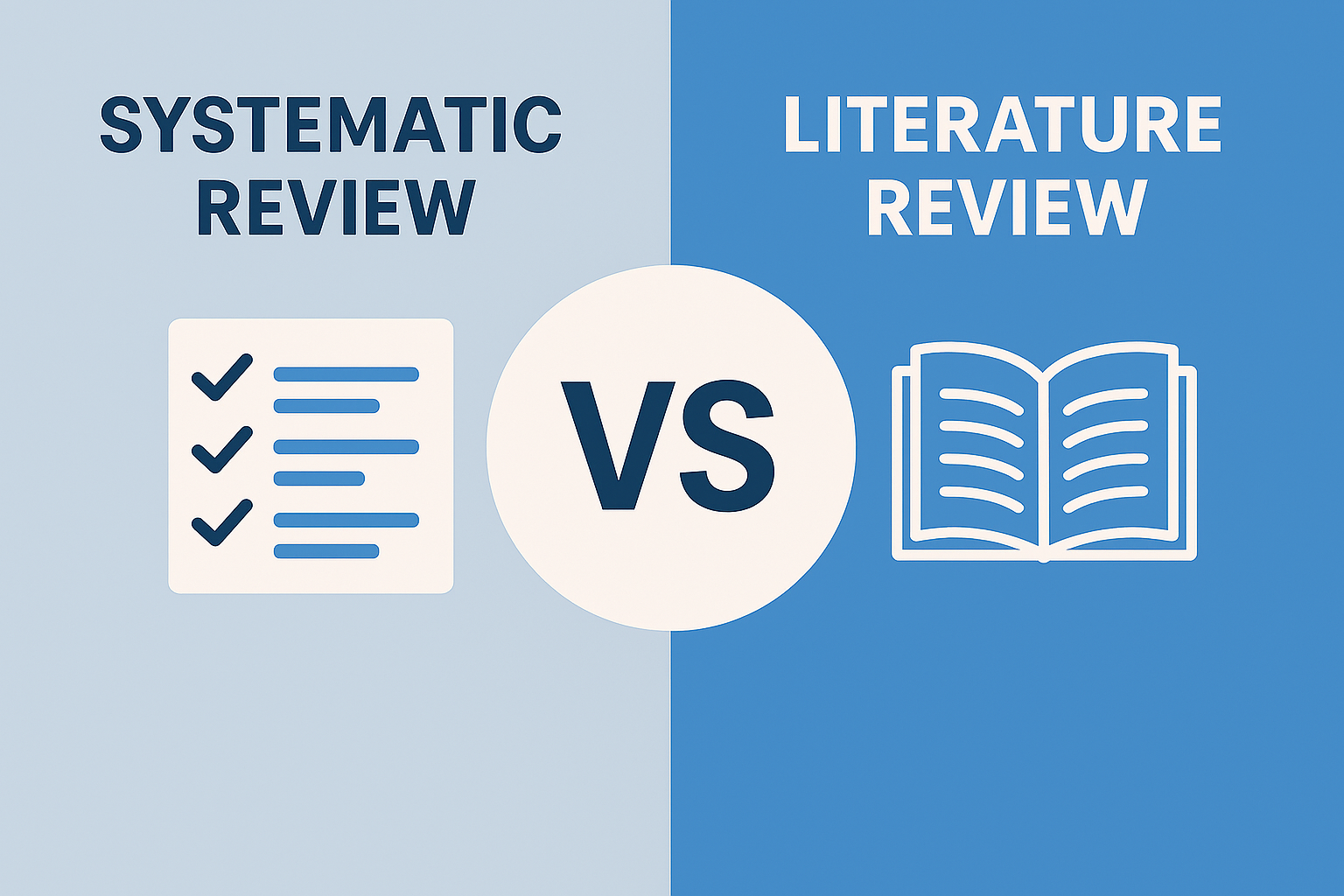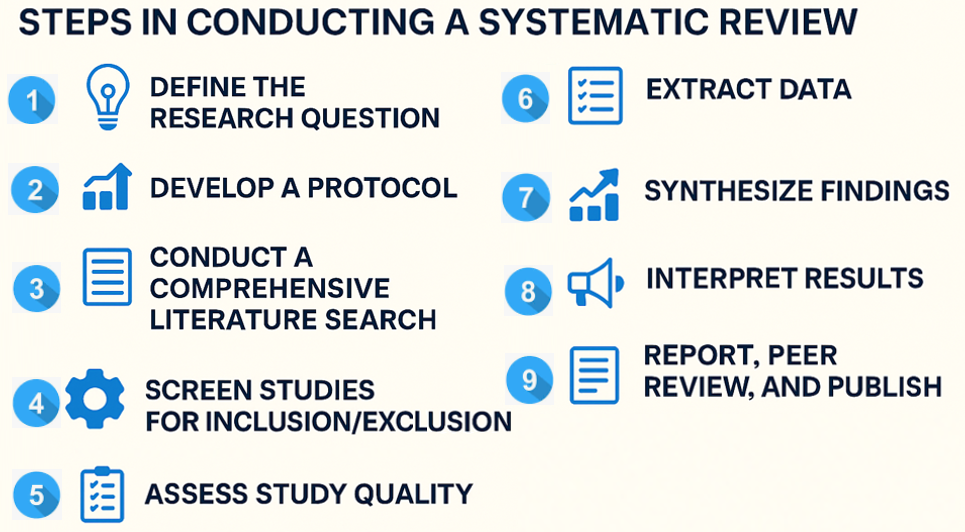 |
In academic research, reviews are essential for synthesizing existing knowledge and guiding future studies. Two prevalent types of reviews are literature reviews and systematic reviews. While they share the goals of gathering information from existing studies and consolidating research findings, they differ significantly in their purposes, approaches, and applications. This guide explores these differences, outlines the steps involved in conducting a systematic review, and introduces AI tools that enhance this process.
6 Aug 2025 [3 min read] |
Comparing Systematic Reviews and Literature Reviews
Purposes:
Methodologies:
Deliverables:
Use Cases:
Steps in Conducting a Systematic Review
Conducting a systematic review involves several key steps to ensure thoroughness and objectivity:

AI-Powered Tools for Systematic Review
AI-powered tools have become invaluable in enhancing the efficiency and accuracy of systematic reviews. Here are three commonly used tools:
These AI-powered tools offer a range of features that significantly enhance and streamline the systematic review process, empowering researchers to conduct high-quality reviews with greater ease, efficiency, and precision. As AI continues to evolve, it offers exciting opportunities to navigate the ever-expanding landscape of academic literature more effectively.
Conclusion
Understanding the distinctions between systematic and literature reviews is crucial for choosing the right methodology. Systematic reviews offer rigor and structure, ideal for answering specific research questions with high evidence standards, while literature reviews provide broader overviews useful in exploratory contexts. The structured approach of systematic reviews, supported by AI tools, ensures comprehensive and unbiased synthesis of knowledge, enhancing research outcomes and impacts.
0 Comments.